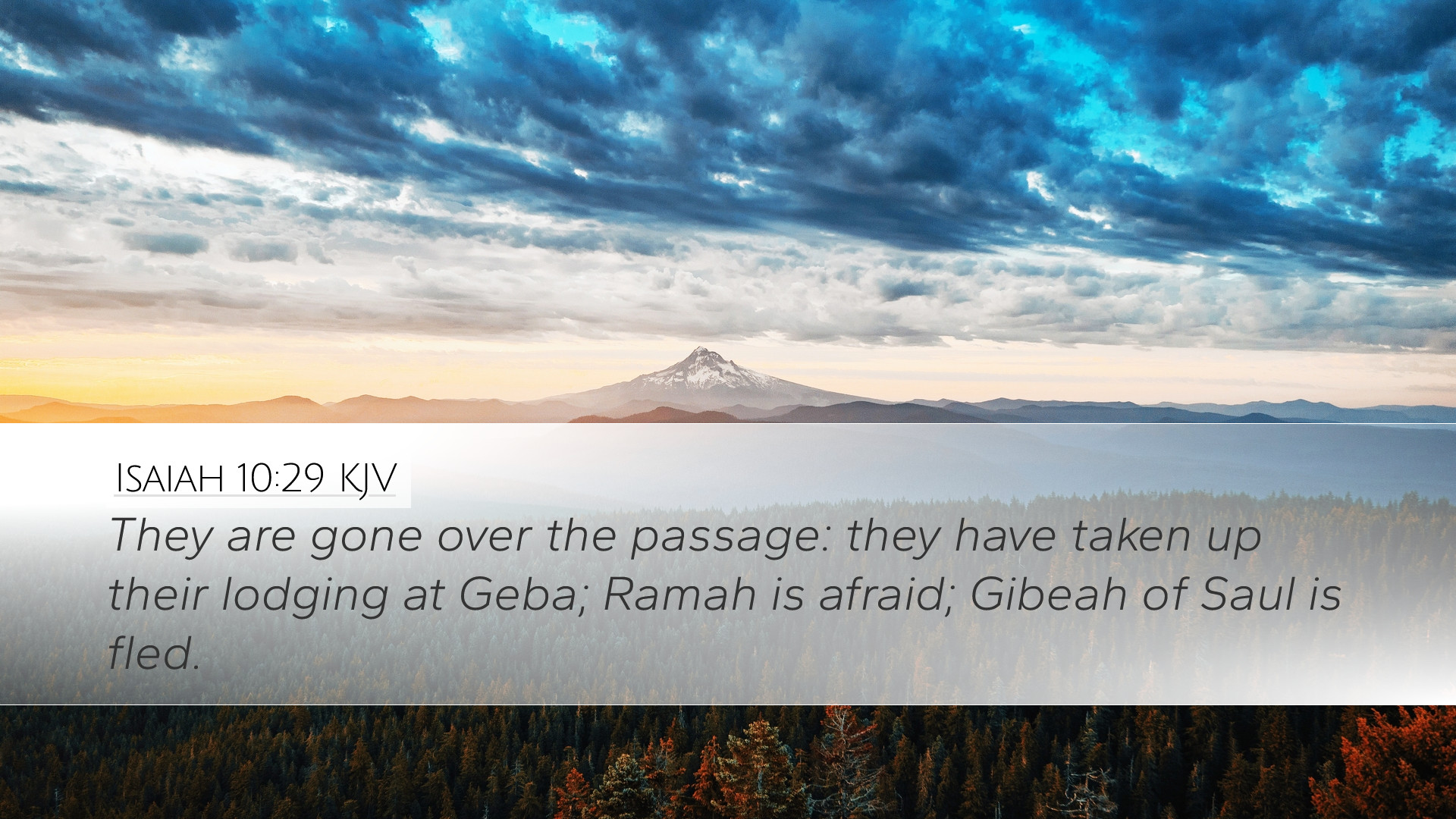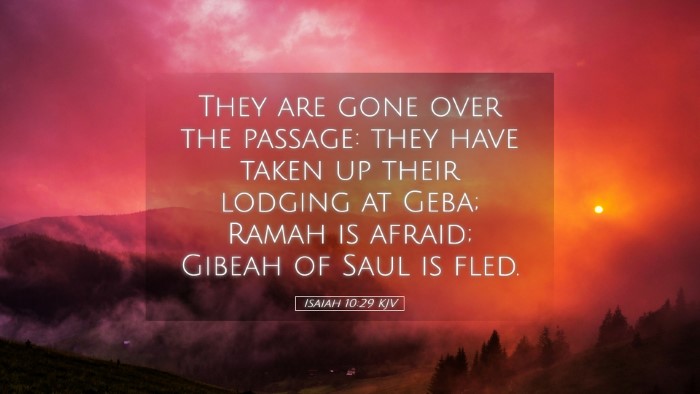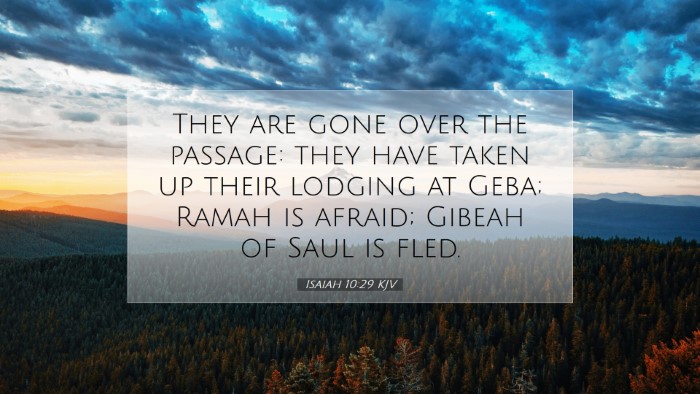Commentary on Isaiah 10:29
Isaiah 10:29 reads: “They are gone over the passage: they have taken up their lodging in Geba: Ramah is afraid; Gibeah of Saul is fled.” This verse serves as a vivid description of the movement and emotions of the people in the face of impending doom, particularly during the Assyrian invasion.
Contextual Background
Historical Context: This verse reflects a tumultuous period in Israel's history when the Assyrians were a significant threat. The people were disheartened, experiencing despair and fear as they saw their cities falling to the enemy.
Geographical Context: The towns mentioned—Geba, Ramah, and Gibeah—are all located in the region of Benjamin, an area that faced great upheaval during this time. These places were significant to the Israelites and their flight underscores the distress caused by the Assyrian advances.
Insights from Public Domain Commentaries
Matthew Henry's Commentary
Matthew Henry emphasizes that this passage represents not just a geographical movement but also an emotional state of God's people. He notes the fear that has gripped Ramah and Gibeah, illustrating that the righteous can also experience trepidation in the face of overwhelming odds. He interprets this flight as a divine judgment on the people for their sins, indicating that they must recognize the consequences of turning away from God.
Key Takeaway: Henry illustrates that fear should lead to reflection upon one’s relationship with God and prompts the faithful to seek His mercy amidst judgment.
Albert Barnes' Commentary
Albert Barnes provides a detailed analysis of the locations mentioned, offering historical insights into their significance. He highlights the panic that ensued due to the Assyrian threat, leading to an evacuation of these towns. Barnes points out that this situation is not merely a military retreat; it indicates a deeper crisis of faith and national identity for the Israelites.
Key Takeaway: Barnes stresses the importance of understanding the physical and spiritual implications of such a retreat and challenges readers to consider the broader consequences of abandoning trust in God during times of peril.
Adam Clarke's Commentary
Adam Clarke expands upon the significance of the flight to Geba, interpreting it as a metaphor for the abandonment of security and divine protection that comes when a nation turns from God. He demonstrates how the fear manifesting in these towns is not only a response to external threat but also reflects internal spiritual malaise. Clarke notes that the mention of Saul’s Gibeah brings a historical dimension, evoking memories of Israel’s past and its leaders, which now stands juxtaposed against the present despair.
Key Takeaway: Clarke's analysis highlights the psychological impact of fear and the need for dependence on divine sovereignty, urging a return to faith as means of overcoming despair.
Lessons for Today
This verse has profound implications for modern believers. The imagery of fear and retreat serves as a warning against allowing circumstances to overshadow faith. Today’s pastors and theologians can draw parallels between historical events and current instances where communities may feel besieged by external pressures such as cultural shifts, economic distress, or moral decay.
- Confronting Fear: The accounts encourage believers to confront their fears with faith and to reflect on their relationship with God when times are tough.
- Historical Awareness: The mention of cities like Gibeah beckons a call to remember the faithfulness of God in past struggles, fostering hope in present challenges.
- Divine Judgment and Mercy: The text invites us to consider the balance between judgment and divine mercy, and how genuine repentance can restore favor.
Conclusion
In examining Isaiah 10:29 through the lenses offered by these esteemed commentators, it is evident that the passage serves as both a historical record and a timeless lesson for the people of God. It calls individuals and communities to reflect on their fears, underpin their faith, and recommit themselves to prayer and trust in God’s divine plan amidst turmoil. Through this compilation of insights, it is hoped that pastors, students, and scholars alike may find a wellspring of inspiration and guidance for their spiritual journeys.


